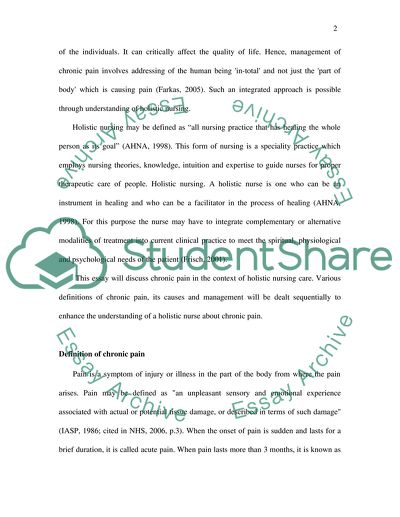Cite this document
(Management of Chronic Pain in Relation to Holistic Nursing Practice Research Paper, n.d.)
Management of Chronic Pain in Relation to Holistic Nursing Practice Research Paper. Retrieved from https://studentshare.org/nursing/1723228-discuss-the-assessment-and-management-of-chronic-pain-in-relation-to-holistic-nursing-practice
Management of Chronic Pain in Relation to Holistic Nursing Practice Research Paper. Retrieved from https://studentshare.org/nursing/1723228-discuss-the-assessment-and-management-of-chronic-pain-in-relation-to-holistic-nursing-practice
(Management of Chronic Pain in Relation to Holistic Nursing Practice Research Paper)
Management of Chronic Pain in Relation to Holistic Nursing Practice Research Paper. https://studentshare.org/nursing/1723228-discuss-the-assessment-and-management-of-chronic-pain-in-relation-to-holistic-nursing-practice.
Management of Chronic Pain in Relation to Holistic Nursing Practice Research Paper. https://studentshare.org/nursing/1723228-discuss-the-assessment-and-management-of-chronic-pain-in-relation-to-holistic-nursing-practice.
“Management of Chronic Pain in Relation to Holistic Nursing Practice Research Paper”, n.d. https://studentshare.org/nursing/1723228-discuss-the-assessment-and-management-of-chronic-pain-in-relation-to-holistic-nursing-practice.


